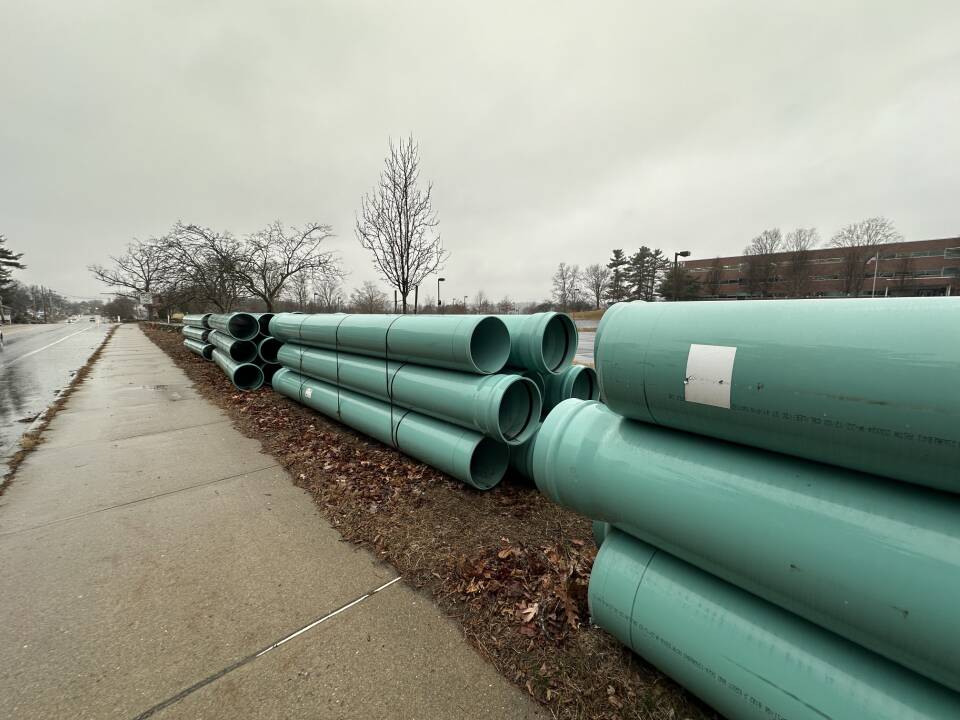Following the end of federal pandemic aid and reduced ridership revenue, transit systems across the country are facing similar massive deficits.
That is, all except one: the country’s largest. The New York Metropolitan Transportation Authority was facing a $600 million budget gap this fiscal year, but now is on track to balance its budget every year through 2027.
Rich Davey, president of the MTA, spoke with GBH News about how the city solved its budget problem and what approaches Boston could try itself.
And Davey knows Boston well. He grew up in Randolph, was manager of the MBTA from 2010-2011, and before that he was the commonwealth’s secretary of transportation.
The state of the MBTA
Gov. Maura Healey has appointed more than 30 members to a statewide transportation funding task force, which is expected to come up with a long-term funding proposal to finance the commonwealth’s transportation system, including the cash-strapped MBTA.
Boston’s transit agency is facing a $182 million deficit this fiscal year, which could grow to $859 million by 2029.
Currently, revenue for the MBTA comes from a share of the state sales tax, federal grants, local government assessments, fares, and own-source revenues like advertising and parking.
MBTA officials say other transit authorities have access to a wider group of revenue streams, including fees on car rentals and ride-share trips, gas taxes, tolls, congestion charges, and cuts of traffic and parking violation payments.
All of those possible revenue sources are on the table as the governor’s task force undertakes its work. It is due to report its findings by the end of the year.
Davey thinks the task force is a good step forward.
“Looking at the task force that Governor Healey put together, you've got all the heavy hitters of all the business groups, right?” he said. “And they're not there, I would assume, to say no revenue at all, right? So, I think having the business community support is critical.”
Potential lessons from New York
Taxes
Davey listed two main sources for the MTA's revenue, one of which is a tax.
“Over $1 billion is coming out of something called the payroll mobility tax, which is a tax that is imposed upon the largest businesses in New York City,” he said.
Davey says those businesses supported raising that tax from 0.34% to 0.6% of a company's payroll.
Casino fees
Casinos are another major revenue source for the New York transit agency. There will be three licenses awarded in the next two years for casinos within New York City.
“We will get the full license fee for those three, each expected to be about a half billion,” Davey explained, “and then a percentage of the gaming revenue going forward — and that's going to be probably between $500 [million] and $700 million a year.”
Cutting costs
Although taxes and casino fees are expected to comprise the bulk of new revenue, Davey says the authority is making concessions too.
“What we agreed to do was to come up with a total of $400 million in recurring annual savings,” he said.
Davey says those savings are not from sacrificing service, but rather from operational efficiencies like incentivizing more people to return to the workforce to avoid costly overtime, changing all lighting to LEDs, and instituting something called predictive maintenance to keep the rolling stock in good repair to avoid more expensive fixes.
Fare increases
There are also fare increases in the mix at the MTA.
“We had a modest fare increase of 4%. … We went from the base fare from $2.75 for bus and subway to $2.90, for a 15-cent increase,” he said. “And we built in biannual increases for tolls and fares.”
Davey says the next scheduled fare increase — between a 3% and 4% rise — won't be until summer 2025, and a similar increase is scheduled in 2027.
Tolls
Increased tolls are in the picture as well. Unlike Massachusetts, where toll revenues from the MassPike have to be spent on the highway, toll revenue from New York City's bridges and tunnels can be used across the transportation system.








